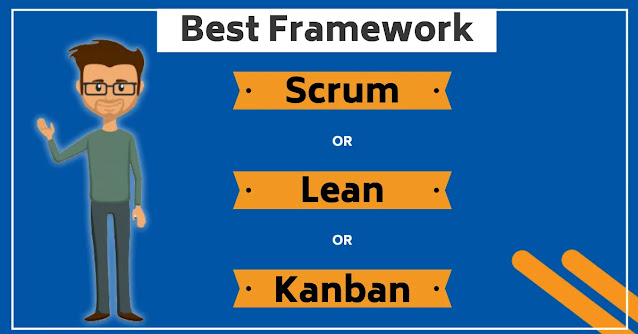Agile methodology started gaining popularity around 2014-15. It was initially designed for projects that required speed, agility & flexibility. It breaks down delivery cycles into short, iterative bursts, known as Sprints. Agile is highly interactive, and it allows rapid adjustments throughout a project. Agile offers repeatable processes, lesser risks, allows for immediate feedback, provides fast turnaround, and reduces complexity.
This article covers the key considerations and vital assessment criteria when choosing a methodology out of multiple Agile frameworks or methodology. Now let's have a closer look at the three most popular Agile Frameworks and their comparison, which can help all of you make the right decision for your project.
Comparison of Scrum, Lean & Kanban:
| CRITERIA | SCRUM | LEAN | KANBAN |
| Definition | To expedite the higher quality products, recurring and predefined rules, roles, and processes are being used | To reduce waste and to increase learning and integrity, the manufacturing and technology principles are being used | It is a visual framework used for continuous improvements, and it involves the visual workflow to limit work in progress and match requirements. |
| Industries | Initially, it applied to software development, but now it's been applied to many other industries | Initially applied to the manufacturing industry but now it has been applied to many other industries | Initially applied to manufacturing supply chain process, but now many other industries are using it. |
| Primary Focus | The primary focus is to expedite product turnaround and to improve the quality | The primary focus is to eliminate waste, learning, Process integrity, and system improvements | The primary focus is always on tasks and process improvements. |
| Need to determine by push or pull system | Based on the Customer pull system. Customer pulls when there is need exists. | Based on the customer pull system. Customer pulls when there the need exists. | Based on the customer pull system. Customer pulls when there the need exists. |
| Prioritizing work & WIP (Work in progress) | Scrum framework uses Product Backlog to determine and prioritize the future work in progress | When a customer need is determined, then the Work in Progress prioritization is triggered. | Work in progress is matched to the team's ability to deliver the product. |
| Collaboration | Scrum required a highly self-organized team | Lean required advanced processes and detailed team collaboration | Kanban required minimal management oversight and highly self-organized teams |
| Development Process | Scrum uses formal sprints with specific roles assigned. | Lean uses formal processes and team roles | Kanban doesn't require any formal Sprints or roles |
| Flexibility | Scrum is more formal and less flexible | Lean is the more precise process | Kanban is highly flexible |
| Timelines | Each Sprint duration is of 2-4 weeks of Sprint | There are no specific timelines, but the process should be streamlined | Work is broken down and displayed visually, but there are no timelines. |
| Meetings | Limited to 15 minutes per day | Prompt meeting and required as in when the issues crop up | Meetings are as in when required. |
| Changes to the requirements | During the Sprint progress, changes to the requirements are usually avoided | Changes are usually identified and resolved when they arise within the process | Throughout the process, the changes are allowed |
| Roles | Roles played a vital role and are the only key to success | Teamwork closely together and are aligned based on the common goals | There are no specific roles defined |
| Success Measures | Success measures depend on improved quality and speed of the delivery | Success measures are based on the fast turnaround and depend on the use of Just-in-time flow | Success measures depend on the process duration |
Available Options
It is always necessary to remember that all these Agile frameworks can be combined to provide hybrid solutions. The combination of the best of two frameworks always increases the chances of success. Here I proposed some of the framework integrations that can help anyone ensure successful delivery, depending on their organization culture and other external factors.
Scrumban
This integration or combination uses Scrum as a method to do the actual work, whereas it uses the flexibility of Kanban to seek and gain in the way of continuous improvements.
Leanban
This integration or combination uses Lean as a way to combine the components of Kanban and Scrum framework to deliver the most sustainable values within a short span of time.
Source: novelvista.com






0 comments:
Post a Comment